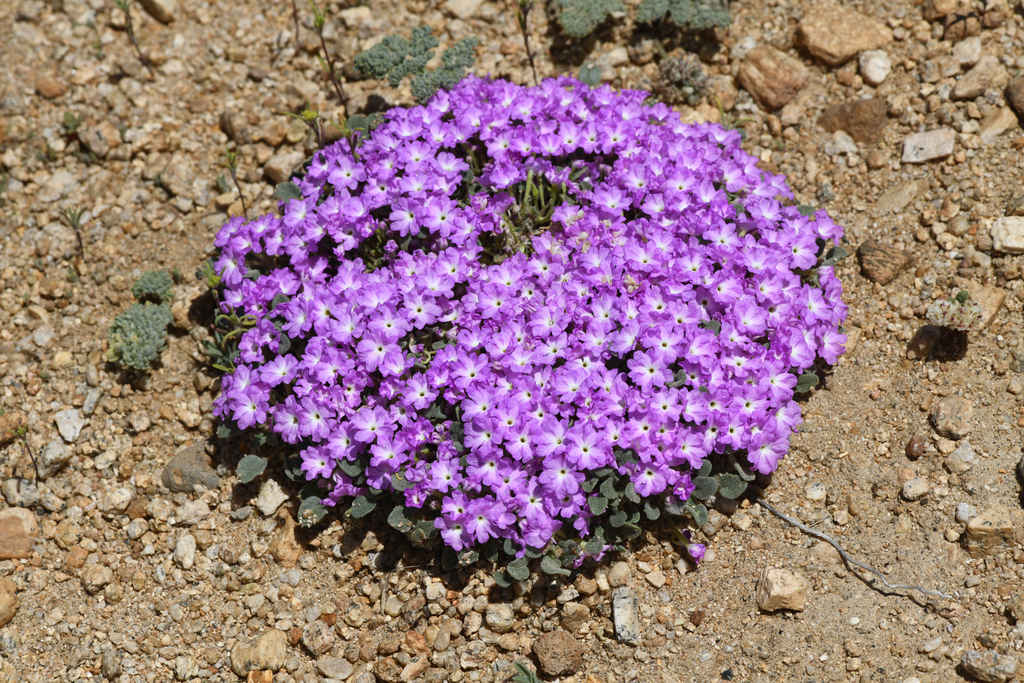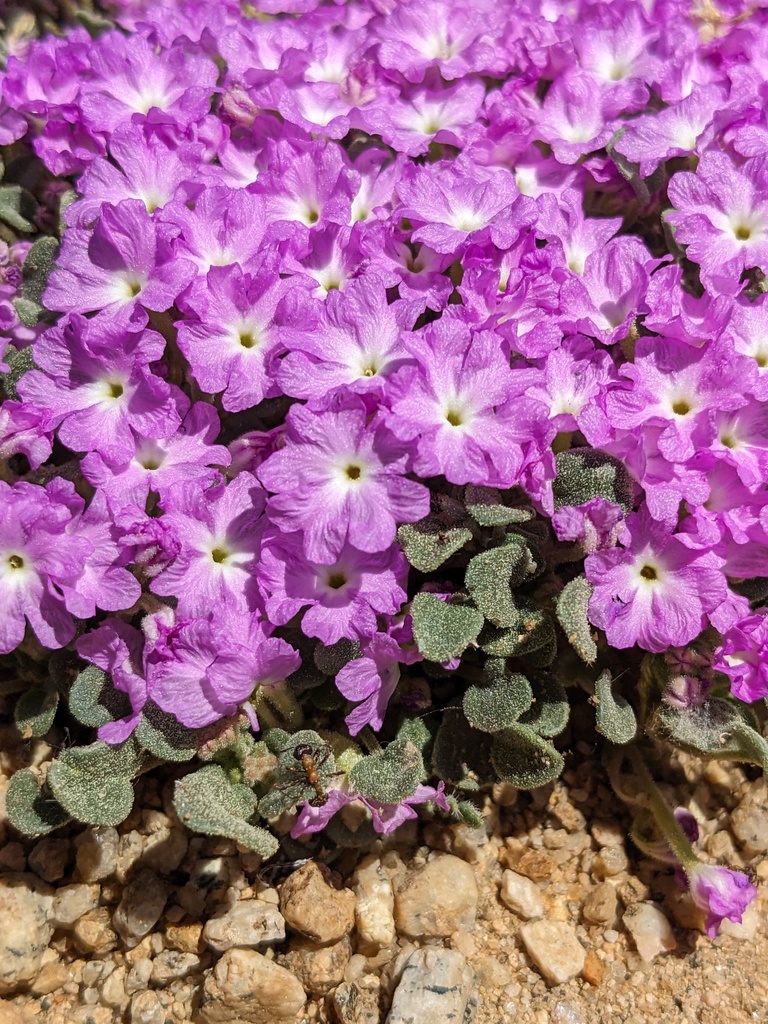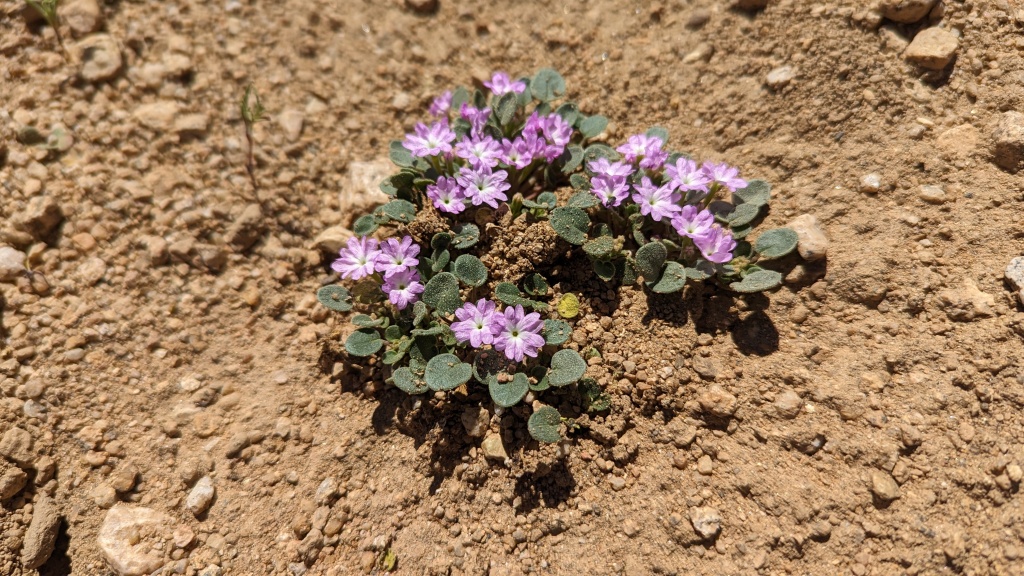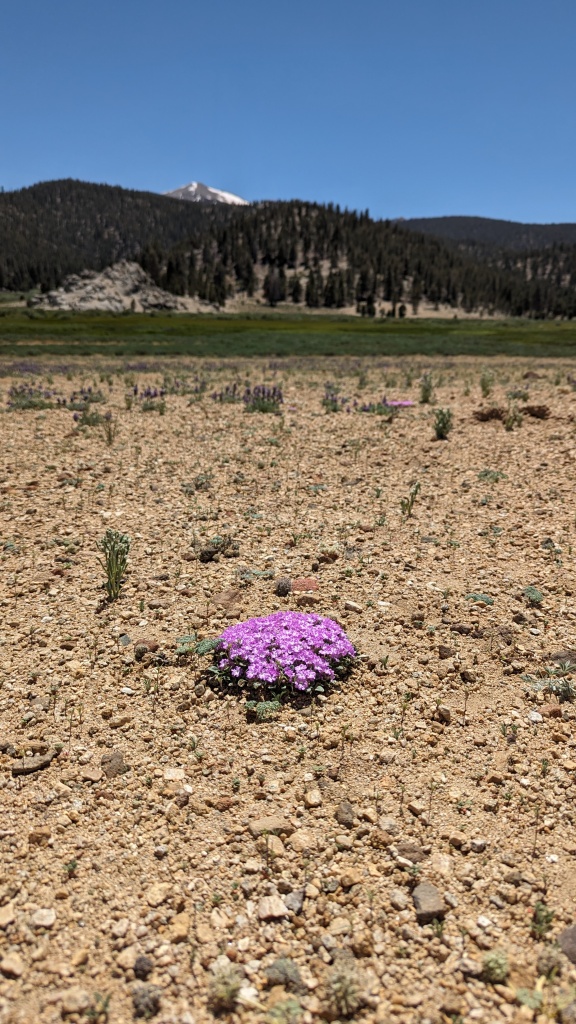If you know a little bit about plants and have heard of Verbena plants, then you’d probably be imagining a coastal dune vibe or a desert ecosystem. Well, this verbena can ONLY be found in two meadows in the alpine of California’s Sierra Nevada Mountains. Whhaaaaat?
Nestled in California’s Tulare County, the elusive Abronia alpina is a botanical rarity that really stunned us upon first sight. It was the focal plant of a one-night backpacking trip in the Golden Trout Wilderness. We stumbled upon it in the early afternoon of our first day in the wilderness.

This exquisite flowering plant, is a member of the Genus Abronia (Sand Verbenas), in the family Nyctaginaceae ( the Four O’Clocks), and within the Order of Pinks, Cactuses, and Allies.

Enchanting Characteristics
Imagine an alpine meadow with a sandy granitic beach-like edge, peppered with clusters of various plant species, this is where the Abronia alpina thrives. This perennial herb forms a low, compact mat. Its petite leaves, no longer than a centimeter, delicately adorn short petioles (think stems for flower heads). Both the stems and foliage are covered in a soft fuzzy layer as well as glands, which both contribute to its unique appearance.
Colorful Cluster
White, pink, and lavender clusters sparsely dotted the wide and hot landscape of the meadow’s edge, making for quite the scene. The flower heads are only about a centimeter in size, but their colorful blossoms all packed together in mat form really make it a spectacular specimen.


Endemic Treasure
Tulare County is the proud host of Abronia alpina’s solitary residence, making it an endemic plant, and therefore has a 1B.1 California Rare Plant ranking, and Imperiled G2 state status. It can only be found in two high-elevation meadows within the Sierra Nevada, one being Ramshaw meadows, hence its name the Ramshaw Meadows sand verbena. It grows between 8,630 and 8,925 ft in elevation.
“In a good year, the population size can be as high as 132,000 plants” according to the NatureServeExplorer species page. While that might sound like a lot of plants, its whole range is less than 40 square miles / 100 square kilometers which is all within USFS land within the Inyo National Forest. In a low year, there might only be about 60,000 plants. These fluctuations could relate to pollinator abundance, but the population outlook is “relatively stable.”
Ongoing threats to the few populations include the expansion of Lodgepole Pine (Pinus contorta) and hydrological changes. Potential current and future threats include “climate change, the loss of pollinators, and gophers, which dig up plants and cause plant damage.” These factors are different than past threats which included at one point: “grazing and trampling by cattle and trampling by hikers and their pack animals” (NatureServeExplorer, Abronia alpina). Thankfully ongoing awareness and land management, like ceasing cattle grazing in the meadows in 2001, and rerouting hikers has helped the populations. But botany enthusiasts are free to visit the plants like we did.


A Plant Worth Planning For…
Anyone who is lucky enough to have an encounter with this species should count themselves lucky, especially if caught flowering! So shoot for July and August to hit the bloom period juuuuust right according to CalFlora, but Jepson says May to September. So good luck!
Amid the diversity of California’s flora, Abronia alpina definitely stands as a reminder of the enchanting surprises found in every corner of this great state.


Happy Botanizing!
References:
- Abronia alpina, Calflora
- Ramshaw Meadows Sand-verbena, NatureServe Explorer
- Abronia alpina, Wikipedia